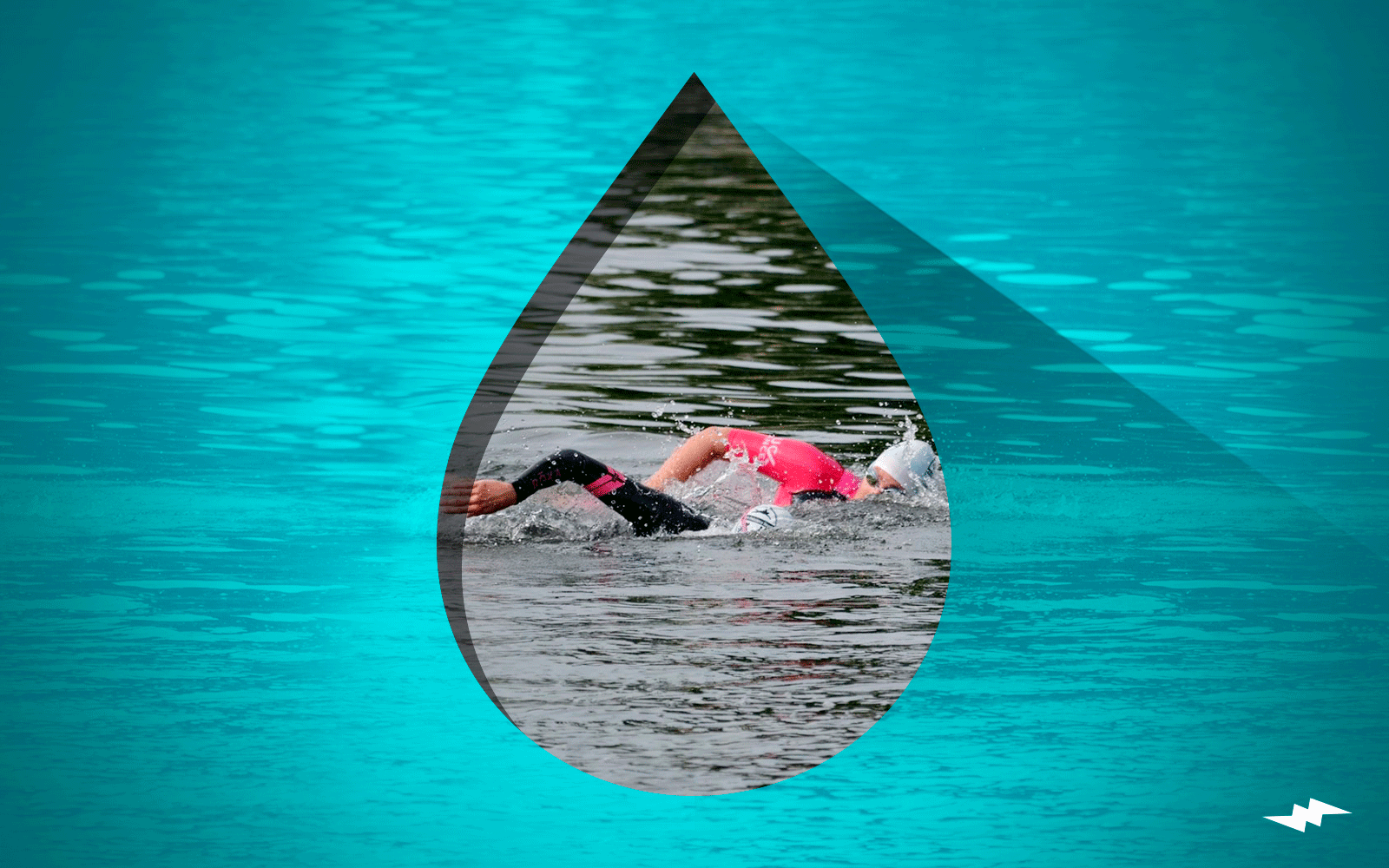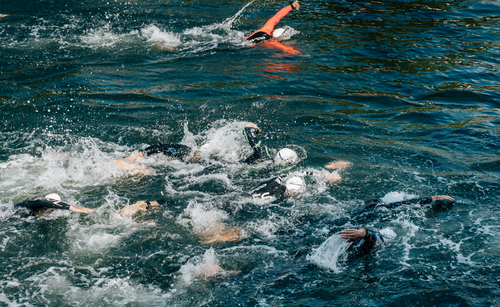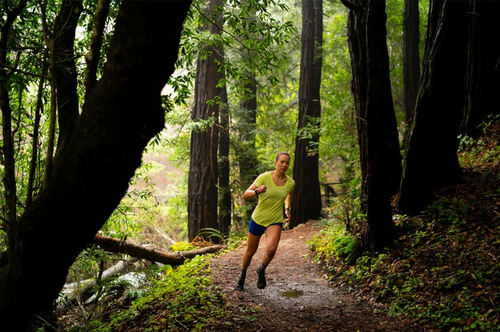Common Freestyle mistakes and how to fix them

There is no hiding poor technique when it comes to the swim leg of a triathlon. It can mean the difference between an enjoyable start to the event when you can glide effortlessly through to first transition, or a dreaded exercise in survival that creates anxiety at the beginning of every event.
Proper swimming technique will have you positioned with your hips high in the water to reduce drag, and an efficient stroke that keeps your body well balanced. Some common freestyle mistakes are lifting the head to breathe, over rotation, poor arm and hand positions, and off-balanced kicking.
Lifting The Head To Breathe
One of the most common errors made by beginners is lifting the head to breathe. You may think that this does not apply to you, but it would be a good idea to get a friend to video you from the side. Oftentimes a swimmer will unknowingly lift their head initially and then turn to the side, creating a circular motion with their head. Either of these issues has the same effect; it drops your legs and creates a huge amount of drag.
Learning to breathe properly is a major breakthrough for beginner swimmers because, without the drag of dropped legs, swimming becomes much more efficient and you will feel yourself starting to glide through the water.
The solution for this is to imagine that there is a steel rod going through the top of your head and down into your spine. You can only rotate left and right. This will take a lot of time and patience to perfect, so don’t expect results overnight. With perseverance, however, you will begin to find swimming becomes easier and you can start to focus on more advanced techniques.
Over Rotation
Once you have learned to breath to the side, the next common issue is over rotation. Particularly as you tire, you start gasping for air and over rotating the body so that one shoulder drops deep into the water and your face aims up to the sky. This creates imbalances in your stroke, and with that comes unwanted drag which makes the swim increasingly difficult.
In order to deal with this, imagine a string is attached from your elbow to the side of your mouth. As your elbow lifts out of the water, so your head turns to follow it. This will aim your mouth towards your armpit rather than towards the sky. Try to breathe out of one side of your mouth only – imagine Popeye! Finally, attempt to one eye in the water on each breath and this will force you not to over rotate.
Poor Arm And Hand Position
Given that the main propulsion for freestyle swimming comes from the arms, proper positioning of the arm and hand from entry to exit is imperative for a smooth efficient stroke. Check out the table below which shows three common issues with arm and hand position, and drills to help you.



Off-Balanced Kicking
Watch yourself on video again and pay particular attention to your legs. As you breathe, do you see your legs opening like a pair of scissors? If so, this is a sure sign of an unbalanced stroke. You are subconsciously using your legs to balance your body in the water. Off-balanced kicking is more of a symptom then, rather than the cause of a problem.
In order to create a more balanced stroke, try the catch-up drill. A staple of swim clubs across the globe, this drill is designed to create a smooth, symmetrical stroke. With one hand out in front of you, allow the opposite hand to touch (or ‘catch up’) it before initiating your next stroke. You may find that you need to kick harder, especially when breathing, in order to stop your legs from dropping but it will teach your body to become more balanced. As you progress with this drill, you will find that you can stretch and glide with more confidence and control.
Final Thoughts
Swimming is such a small portion of a triathlon in terms of distance; however it is often the most feared because it relies so heavily on technique. When you see other swimmers gracefully sliding through the water, remember that we all started in the same place. It takes years of practice and dedication to become a top swimmer, but with properly focused training you can make great gains which will make you feel a lot more confident going into your next race.
Written for Innerforce by Stewart Spiessens
Photos. @kimberlypedrotti

There is no hiding poor technique when it comes to the swim leg of a triathlon. It can mean the difference between an enjoyable start to the event when you can glide effortlessly through to first transition, or a dreaded exercise in survival that creates anxiety at the beginning of every event.
Proper swimming technique will have you positioned with your hips high in the water to reduce drag, and an efficient stroke that keeps your body well balanced. Some common freestyle mistakes are lifting the head to breathe, over rotation, poor arm and hand positions, and off-balanced kicking.
Lifting The Head To Breathe
One of the most common errors made by beginners is lifting the head to breathe. You may think that this does not apply to you, but it would be a good idea to get a friend to video you from the side. Oftentimes a swimmer will unknowingly lift their head initially and then turn to the side, creating a circular motion with their head. Either of these issues has the same effect; it drops your legs and creates a huge amount of drag.
Learning to breathe properly is a major breakthrough for beginner swimmers because, without the drag of dropped legs, swimming becomes much more efficient and you will feel yourself starting to glide through the water.
The solution for this is to imagine that there is a steel rod going through the top of your head and down into your spine. You can only rotate left and right. This will take a lot of time and patience to perfect, so don’t expect results overnight. With perseverance, however, you will begin to find swimming becomes easier and you can start to focus on more advanced techniques.
Over Rotation
Once you have learned to breath to the side, the next common issue is over rotation. Particularly as you tire, you start gasping for air and over rotating the body so that one shoulder drops deep into the water and your face aims up to the sky. This creates imbalances in your stroke, and with that comes unwanted drag which makes the swim increasingly difficult.
In order to deal with this, imagine a string is attached from your elbow to the side of your mouth. As your elbow lifts out of the water, so your head turns to follow it. This will aim your mouth towards your armpit rather than towards the sky. Try to breathe out of one side of your mouth only – imagine Popeye! Finally, attempt to one eye in the water on each breath and this will force you not to over rotate.
Poor Arm And Hand Position
Given that the main propulsion for freestyle swimming comes from the arms, proper positioning of the arm and hand from entry to exit is imperative for a smooth efficient stroke. Check out the table below which shows three common issues with arm and hand position, and drills to help you.



Off-Balanced Kicking
Watch yourself on video again and pay particular attention to your legs. As you breathe, do you see your legs opening like a pair of scissors? If so, this is a sure sign of an unbalanced stroke. You are subconsciously using your legs to balance your body in the water. Off-balanced kicking is more of a symptom then, rather than the cause of a problem.
In order to create a more balanced stroke, try the catch-up drill. A staple of swim clubs across the globe, this drill is designed to create a smooth, symmetrical stroke. With one hand out in front of you, allow the opposite hand to touch (or ‘catch up’) it before initiating your next stroke. You may find that you need to kick harder, especially when breathing, in order to stop your legs from dropping but it will teach your body to become more balanced. As you progress with this drill, you will find that you can stretch and glide with more confidence and control.
Final Thoughts
Swimming is such a small portion of a triathlon in terms of distance; however it is often the most feared because it relies so heavily on technique. When you see other swimmers gracefully sliding through the water, remember that we all started in the same place. It takes years of practice and dedication to become a top swimmer, but with properly focused training you can make great gains which will make you feel a lot more confident going into your next race.
Written for Innerforce by Stewart Spiessens
Photos. @kimberlypedrotti
SEE WHAT CUSTOM APPAREL LOOKS LIKE

GEAR UP
MORE FROM THE BLOG

How to Plan Your 2019 Season to Put Your Hard Training to Good Use
Team Innerforce's 2019 coach, Rick Lapinski, explains how to effectively plan your race schedule in order to get the most...

Breakfasts to fuel your bike session
To bike well, one has to eat well. Early morning sessions are always tough, but focussing on a good...

Innerforce Signs Kayla Kobelin: "I'm excited to to push myself even further"
It is with great pride that we, at Innerforce, welcome Kayla Kobelin to the Innerforce family as our first sponsored...

Triathlete Nutrition: What to Eat to Maximize Performance
Nutrition is crucial in any sport but for a multi-faceted discipline like triathlon, which tests your swimming, cycling and running...



